I have written the following code to simulate an unbiased random walk on Z^2. With probability 1/4, the "destination" is supposed to move one unit up, left, right, or down. So I made "destination" a matrix with two columns, one for the x-coordinate and one for the y-coordinate, and increment/decrement the appropriate coordinate as according to the value of runif(1).
N_trials <- 10
N_steps <- 10
destination <- matrix(0,N_trials,2)
for(n in 1:N_steps) {
p <- runif(1)
if(p < 1/4) {
destination[n,1] <- destination[n,1] - 1
}
else if(p < 1/2) {
destination[n,1] <- destination[n,1] + 1
}
else if(p < 3/4) {
destination[n,2] <- destination[n,2] + 1
}
else if(p < 1) {
destination[n,2] <- destination[n,2] - 1
}
}
However, the process never seems to move out of the set {(0,0),(1,0),(-1,0),(0,1),(0,-1)}. Why is this? Is there an error in the logic of my code?
